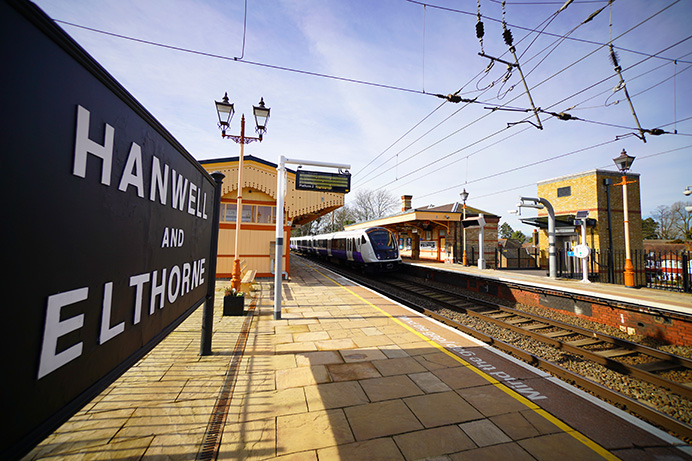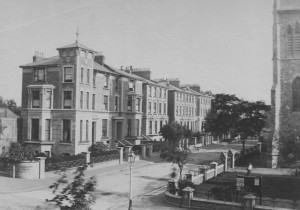Extensive renovations on the inside, and improvements to the outside, have transformed the Grade II listed Hanwell Station.
And Ealing Council and Historic England have now agreed that the 19th Century station can be taken off the Heritage at Risk Register.
The careful restoration of original features, and accompanying modernising upgrades, have been carried out by Transport for London (TfL). It was done as part of a wider programme of improvements across the rail network in preparation for the Elizabeth line (formerly known as Crossrail), which will bring an extra 1.5 million people to within 45 minutes of central London.
Restoration and modernisation
At Hanwell, the original station buildings have been repaired, re-painted and restored to the traditional Great Western Railway cream and golden-brown colour scheme. Historic signs on the platforms have also been carefully restored, and on the staircases, timber handrails and cast-iron balustrades have been given a new lease of life with lighting upgraded to brighter, energy-saving LEDs fitted in the traditional hanging lanterns. A derelict building on platform 2 has been turned into a new, spacious waiting room with beautiful period features, while the waiting room on platform 3 has also been refurbished to match. New customer information screens displaying live travel information including local bus departure times now make the customer experience even better.
Ealing Council and Historic England, among others, provided advice and expertise on the station conservation project. And, in 2020, the council pedestrianised the area outside of the station to create a paved forecourt, improving access to the station for those walking and cycling.
The accessibility inside the station has been improved by TfL, too. There is now step-free access from street to platform after the installation of lifts, which the council long campaigned for. The lift on platform 2 was built using specialist equipment and required hand excavation over a period of weeks so that the historic timber canopy could be left in place.
Additionally, the customer toilet has been converted into an accessible facility and an accessible ticket office window has been installed. The station will be one of 41 step-free stations on the Elizabeth line when the railway opens for passengers in the first half of 2022.
‘Protected long into the future’
Council leader Julian Bell said: “Preserving Ealing’s outstanding heritage has always been a priority for us and I am delighted to have been able to work alongside our partners TfL to ensure the historic features of Hanwell station are protected long into the future.
“Not only has the renovation eliminated any risk of losing this valuable local heritage, the station has also been upgraded and modernised with new lifts, waiting room, toilets and a refurbished platform. Working with TfL, we have also completed work to improve access to the station for those walking and cycling by creating a paved forecourt.”
‘Victorian character really shines through’
Hanwell Station was originally opened by the Great Western Railway in 1838, although the buildings in place today actually date from a station rebuild in 1877. The station was Grade II listed in 1972 but was already falling into a poor state of repair at that point. Despite having had some work done in 2000, deteriorating signs and peeling paint on platform canopies and buildings showed that the station was in need of a lot of work when TfL and its operator MTR Elizabeth line took over the management of the station in 2017.
Emily Gee, regional director for Historic England in London and the south east, said: “Hanwell has been given a new lease of life thanks to the careful restoration and improvement works by TfL over the last few years. The Victorian character of the station really shines through and we hope all users appreciate the new spaces and intricate details now revealed for many years to come.”
‘Well worth the effort’
Peter Herridge, TfL’s station enhancement manager, said: “Our team, including colleagues from our operator MTR Elizabeth line, has worked closely with the Railway Heritage Trust, Ealing Council and Network Rail to carry out these improvements while preserving the rich heritage of this 19th Century station. Our friends at Didcot Railway Centre also provided some invaluable guidance and inspiration to help us with the finishing touches.
“It was a real collaborative effort and delivered not only step-free access, but vital new facilities that customers will benefit from for years to come. Working with the local borough’s conservation officers in Ealing, we were able to get consent to undertake this restoration. Getting to the stage of the station being removed from Historic England’s Heritage at Risk Register shows that this work was well worth the effort.”











